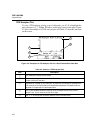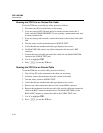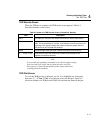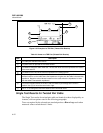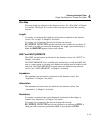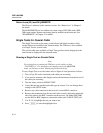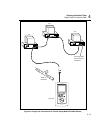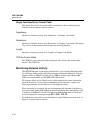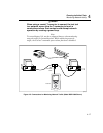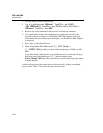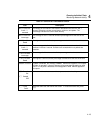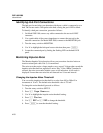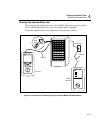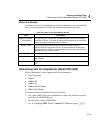
DSP-100/2000
Users Manual
4-16
Single Test Results for Coaxial Cable
The Single Test results for coaxial cable are identical to those displayed by an
Autotest, with exceptions noted as follows.
Impedance
Identical to Autotest version. See “Impedance” in Chapter 3 for details.
Resistance
Identical to Autotest version. See “Resistance” in Chapter 3 for details. The Single
Test version of the resistance test includes the scanning function.
Length
Identical to Autotest version. See “Length” in Chapter 3 for details.
TDR for Coaxial Cable
The TDR test is described for both twisted pair and coaxial cable in the earlier
section “The TDR Test.”
Monitoring Network Activity
The MONITOR mode on the rotary switch allows you to monitor Ethernet traffic
for collisions, jabber, peak traffic and percentage of network utilization. You can
monitor traffic on 10BaseT twisted pair or 10Base2 coaxial cable. Model DSP-
2000 can monitor traffic on 10/100BaseTX cable as well.
This feature allows you to identify active cables and provides some information
on network activity. If you want to troubleshoot active networks, contact your
Fluke representative for information on LAN diagnostic tools.
When connected to a network, the test tool automatically generates link pulses to
activate the hub. Model DSP-2000 uses Auto-Negotiation when attempting to link
to monitor 10/100BaseTX traffic. If a link state with the hub does not occur, the
test tool displays the warning message NO LINK PULSE.
To monitor network traffic on a twisted pair or coaxial Ethernet network, refer to
Figure 4-5 and proceed as follows:



